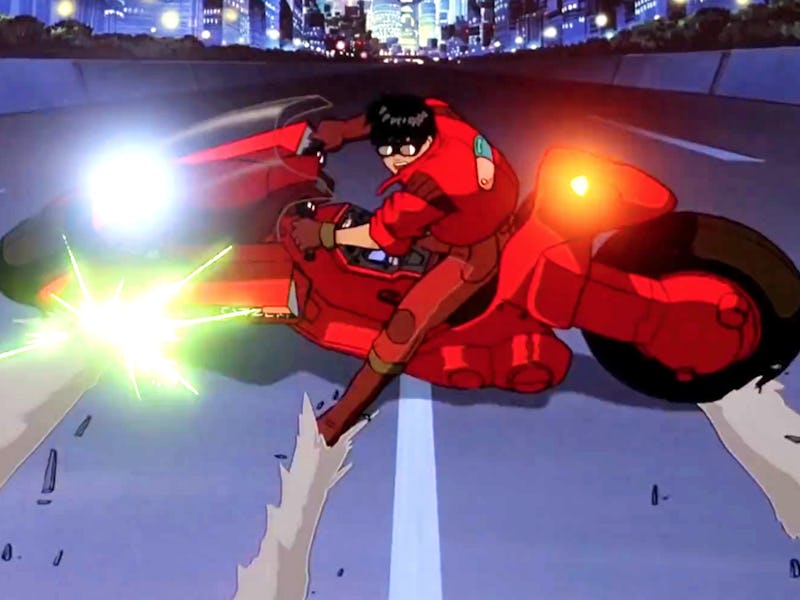The Most Important Sci-Fi Anime Masterpiece Can Never Be Replicated
To this day, Akira is still unmatched.

Akira is everywhere. Watch a modern Hollywood blockbuster and chances are you’ll see a reference to Katsuhiro Otomo’s 1988 anime masterpiece, probably in the form of the iconic “Akira motorcycle slide.” The extremely radical move has appeared in everything from Batman: The Animated Series (which shared animators with Akira), to Wolverine, to Nope. But Akira is so much more than cool imagery, which is one reason why Hollywood has been struggling to adapt Akira to live-action for decades.
The other reason? Akira simply cannot be replicated.
Otomo’s groundbreaking animation looks, acts, and breathes like a live-action film, but goes places live-action could never dream. Every frame is painstakingly animated, right down to the vibrant colors, the intricate backgrounds, and the groundbreaking depiction of light. Its boundary-pushing use of traditional cel animation was so meticulous that animated films can’t even afford to try to copy what Akira did, at least not on its scale. But it’s the weird, grotesque, and eerily prescient story that makes Akira still feel urgent decades after its release.
Set in the sprawling metropolis of Neo-Tokyo after a devastating world war, Akira follows Shōtarō Kaneda, the leader of a teen gang whose best friend, Tetsuo Shima, inadvertently crashes his motorcycle into a child who escaped from a government laboratory with the aid of a resistance organization. When government forces capture both Tetsuo and the child, dubbed an esper, they discover that Tetsuo has nascent psychic abilities similar to the mysterious Akira, an esper responsible for the destruction of Tokyo 30 years ago. It’s up to Kaneda, who races against time to save Tetsuo, to prevent the second destruction of Tokyo.
Akira’s plot is overcomplicated. It’s packed with oppressive governments, capitalistic rot, a struggling rebellion, and far-reaching conspiracies surrounding a failed psychic weapon, all of which is so complex that it’s easy to find yourself lost. But beneath all the weird psychic stuff and disgusting body horror is a striking, timeless story. Like many of Japan’s greatest sci-fi masterpieces, Akira is a movie made in the shadow of nuclear fallout about how humanity can struggle to survive in a technology-ravaged world of our own making.
But the most impressive part about Akira is just how confident it is in depicting a world on the brink. The bright lights of Neo-Tokyo pulsate, and the city brims with such life it feels like it could emerge from the screen. Disillusioned youth stalk their way through the grimy glow of neon lights. A sinister government conspiracy is shown through beeping yellow screens and shadowy faces. And that’s not even getting to the film’s heart-pounding bike sequences and disturbing shocks of body horror, all barreling toward a weird, metaphysical finale.
Tetsuo transforms into a psychic weapon, turning the movie into a story about fighting God.
When Akira was released in 1988 after a long and expensive production that saw the budget balloon from $5.5 million to $9 million (spawning an urban legend that it was the most expensive anime film ever made), it sent shockwaves across Japan and the world. It was one of the first and most prominent anime films to make an impact in the United States, receiving raves from prominent critics and being hailed as an animated “tour de force.” Its impact would bleed into contemporary pop culture, with musical artists like Michael Jackson, Janet Jackson, and Kanye West paying homage.
To this day, Akira’s influence is keenly felt across all of sci-fi. We wouldn’t have The Matrix without it. Christopher Nolan’s Dark Knight and Inception owe much to Akira. Even the Star Wars prequels have drawn from its disturbing vision of the future. We may someday be subjected to Hollywood’s attempt at adapting Akira to live-action, but nothing will ever match the original.
This article was originally published on